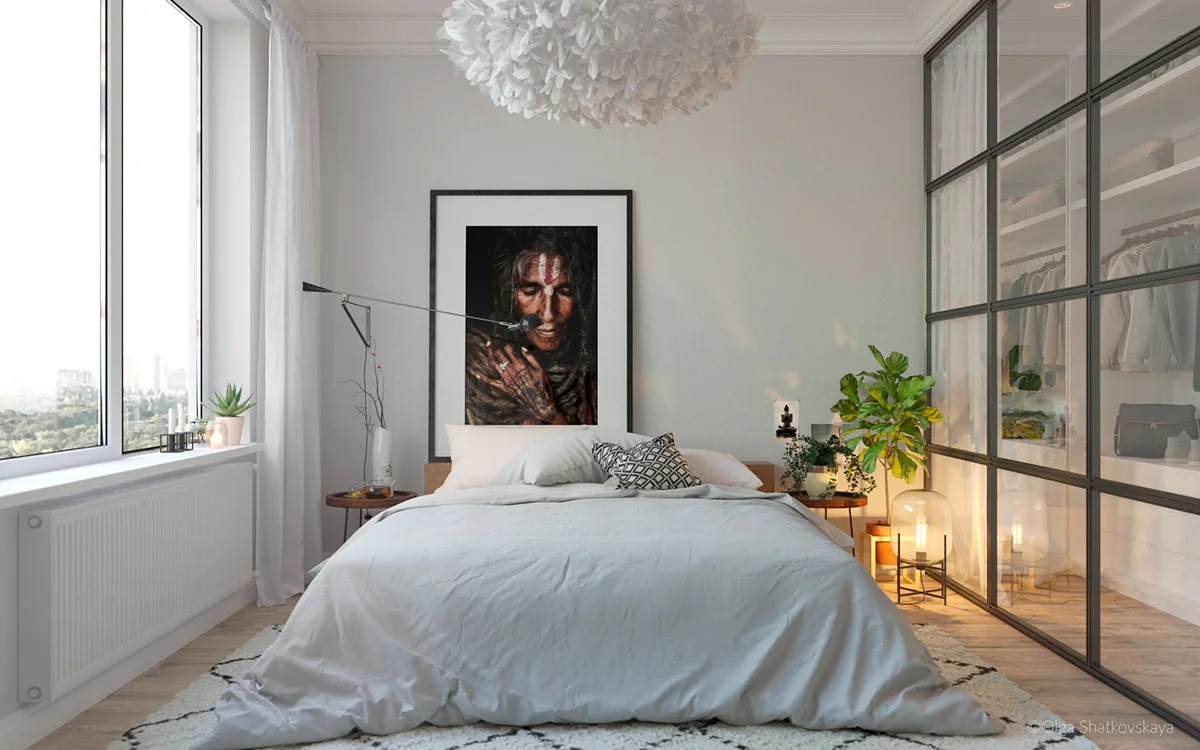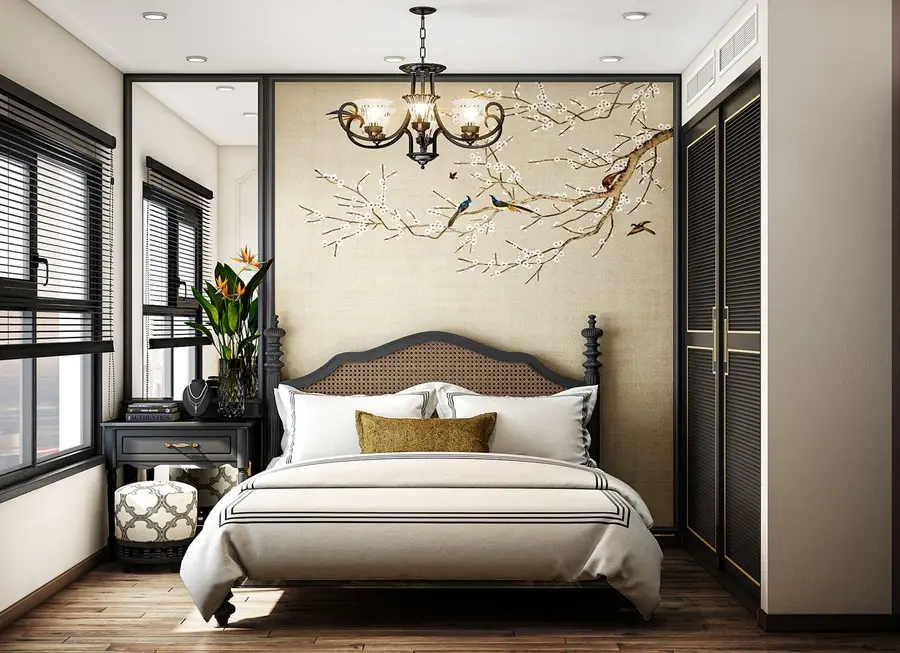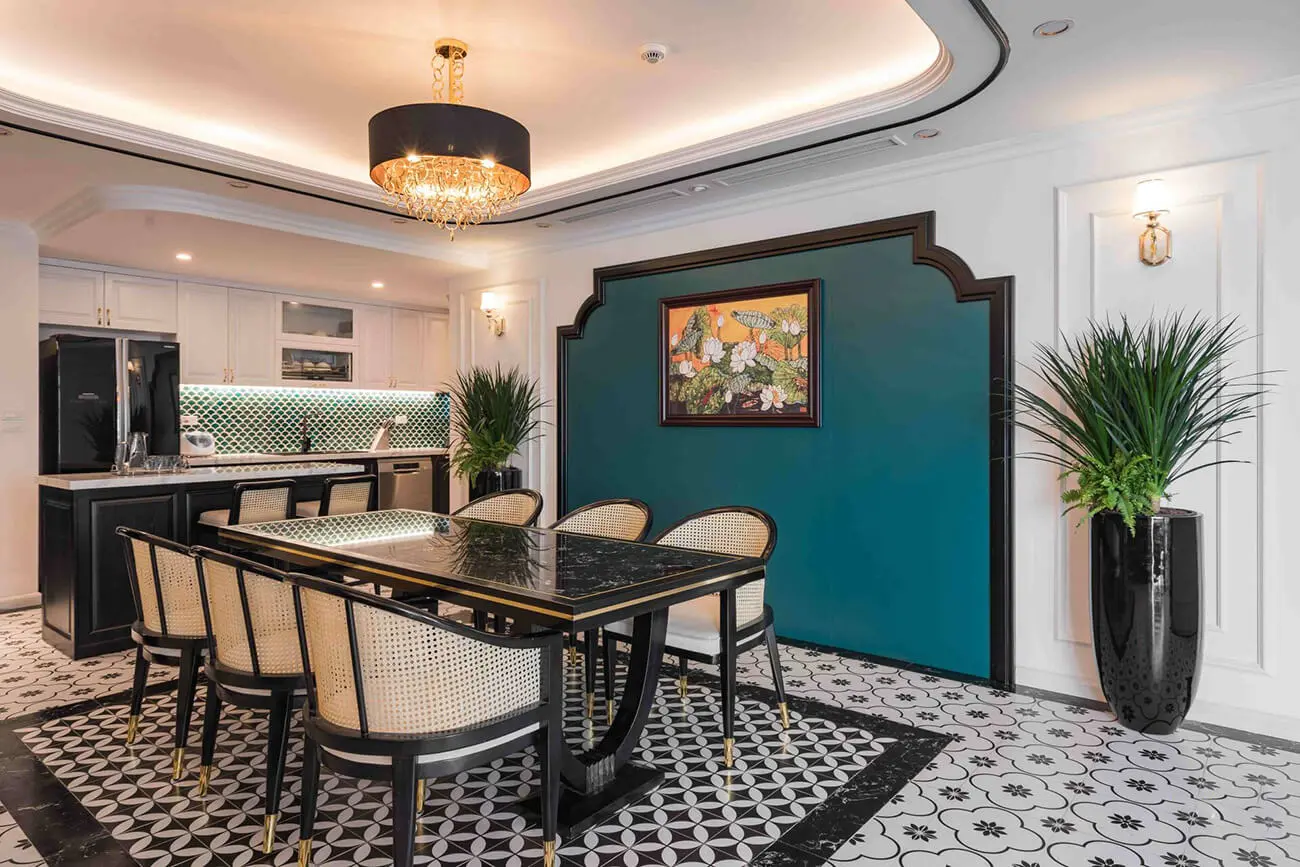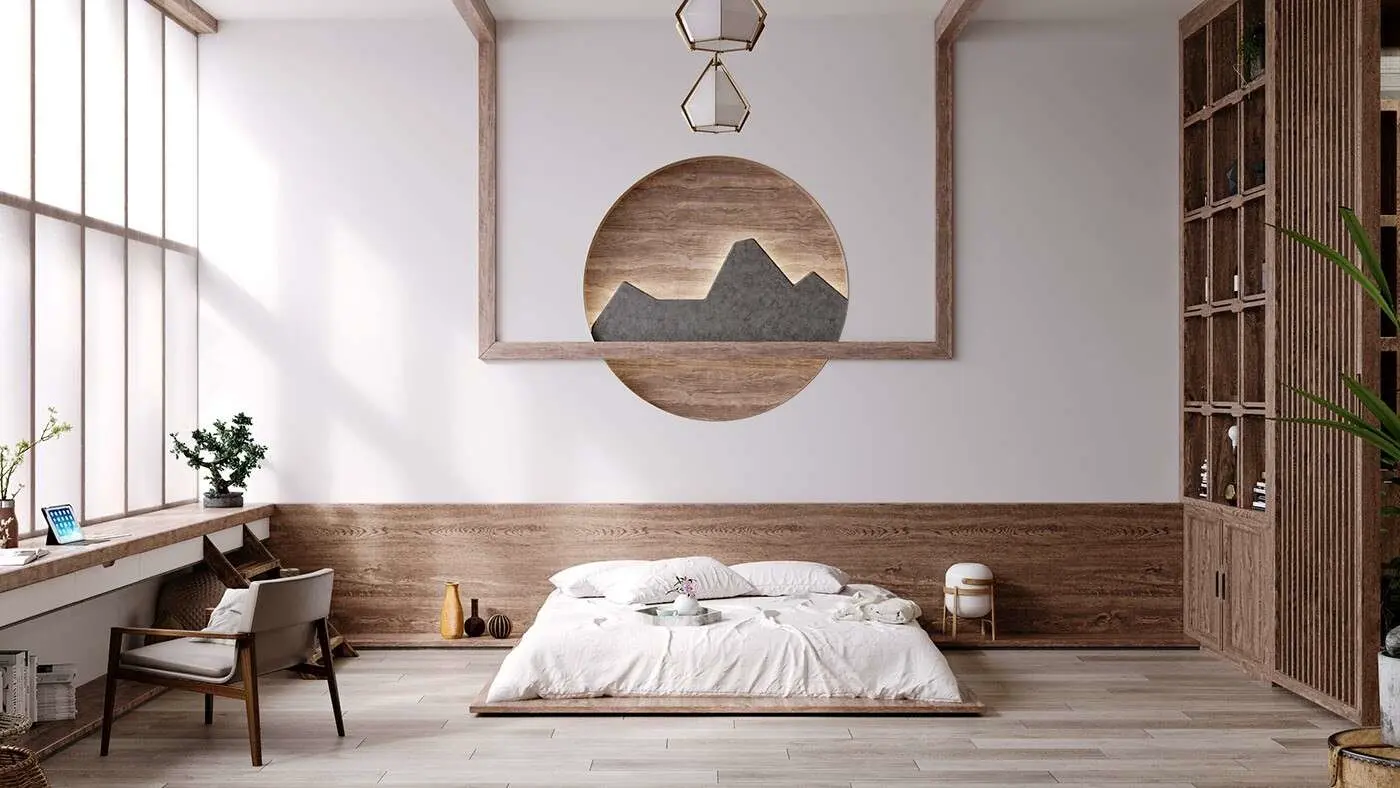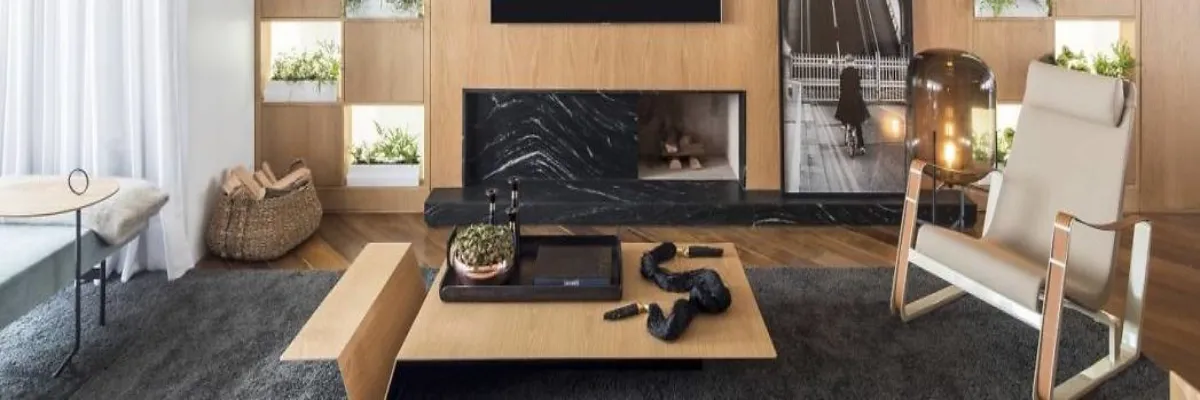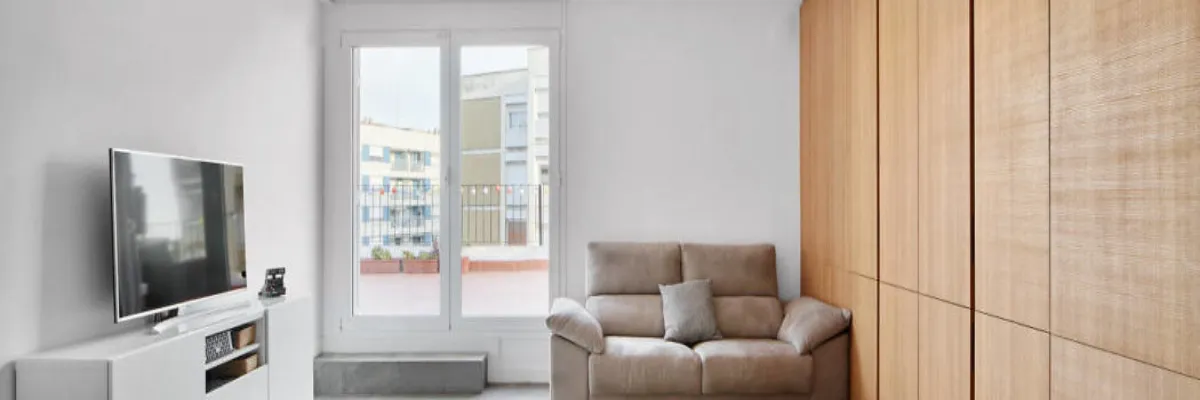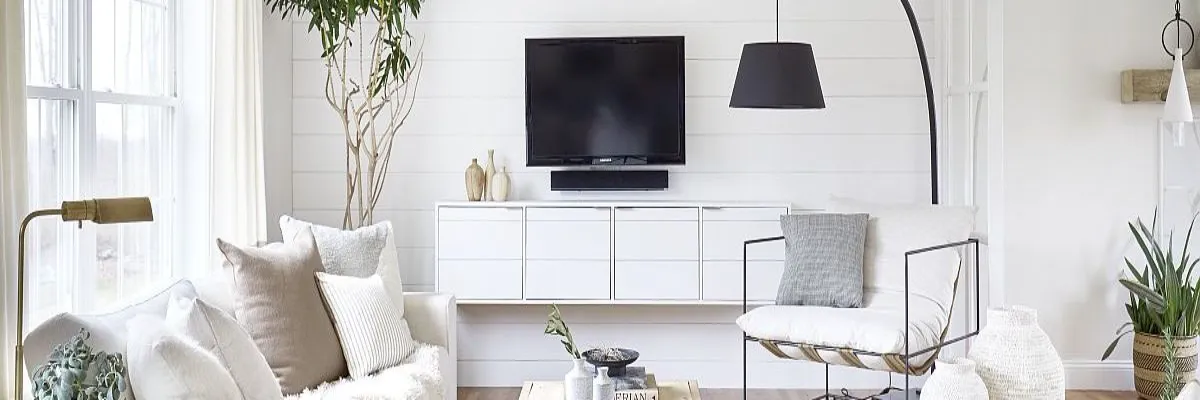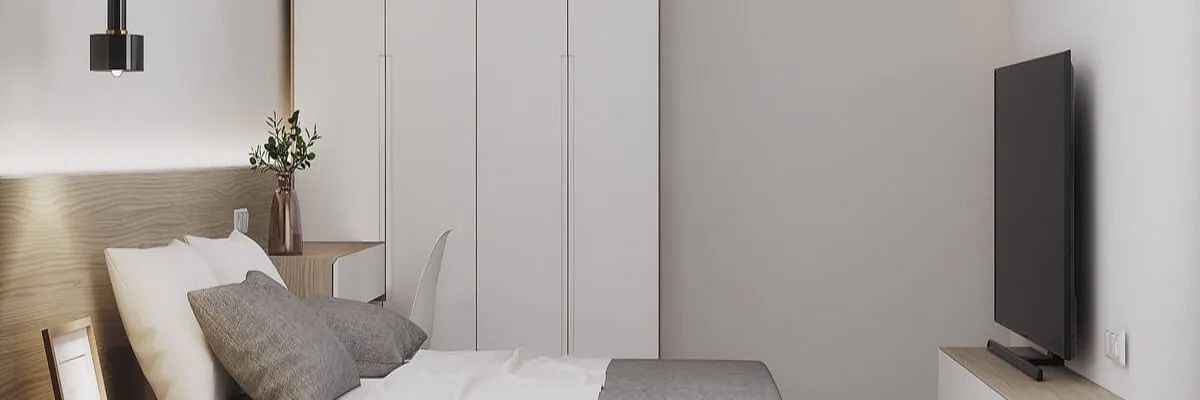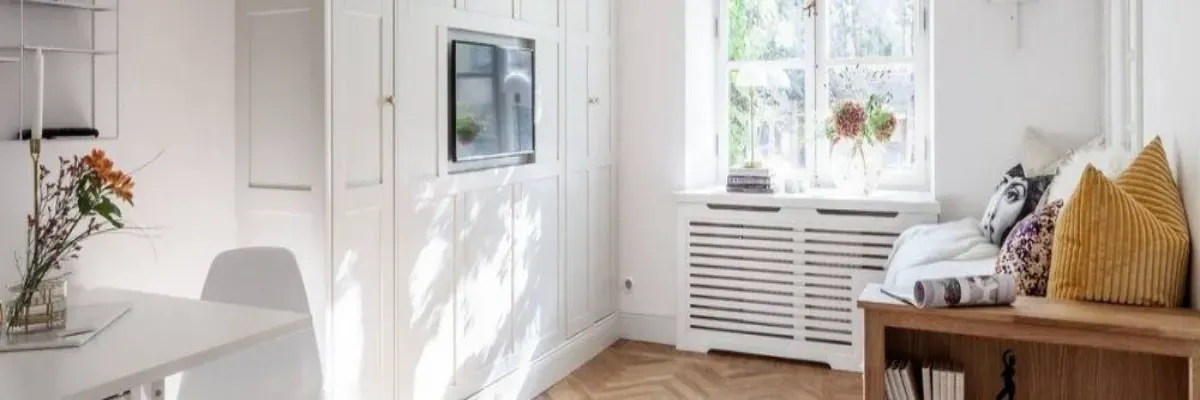mục lục
In the busy whirlwind of modern life, people are increasingly seeking peace and simple values. Wabi Sabi Interior Design Style, with its philosophy of embracing the beauty of imperfection and simplicity, has become an ideal choice for those longing for tranquility in their souls. So what is Wabi Sabi? Let’s explore the prominent features of Wabi Sabi interior style with AIC JSC.
1. What is Wabi Sabi Interior Design Style:
Wabi Sabi Interior Design Style has evolved into a lifestyle applied widely across various art forms such as tea ceremonies, Ikebana flower arranging, Raku ceramics, Karesansui Zen gardens, and especially in architecture and interior design.
Wabi Sabi Design Style is a design philosophy originating from Japan, celebrating simplicity, imperfection, and naturalness. Wabi Sabi not only creates exquisite living spaces but also brings a sense of tranquility by combining elements like natural materials, using neutral colors, and honoring imperfections.
Wabi Sabi Interior Design is suitable for those who appreciate simplicity, rusticity, and cherish natural beauty. This style helps create cozy, peaceful living spaces, providing a sense of relaxation and serenity for the soul.
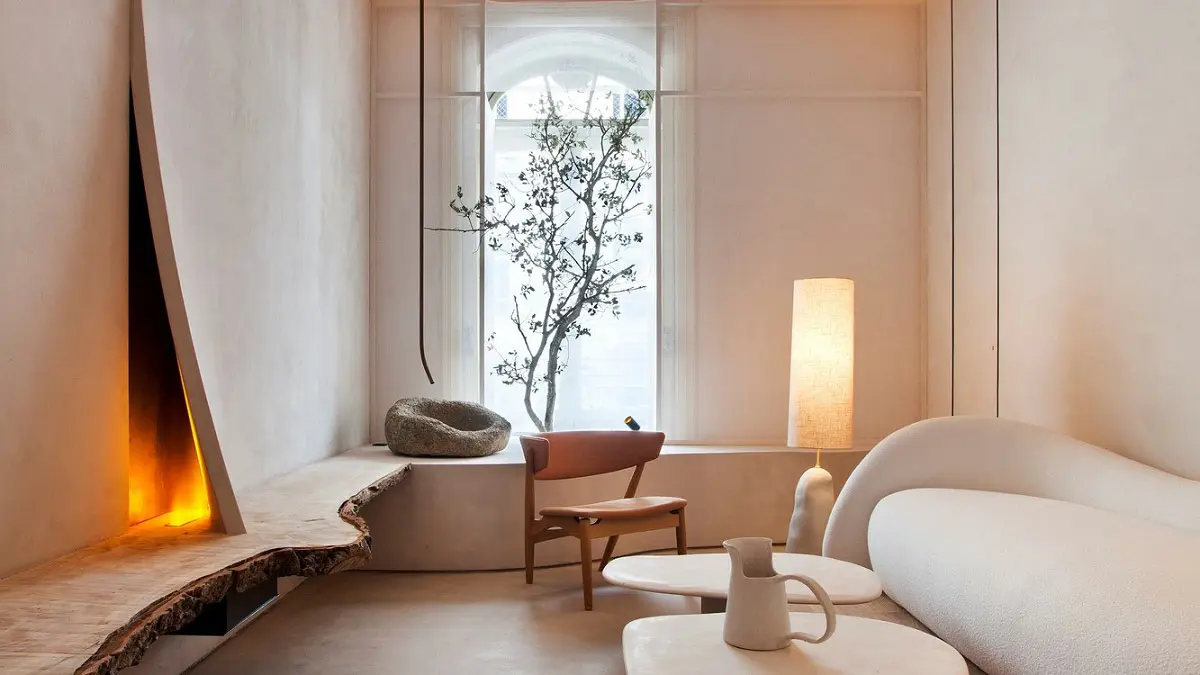
Wabi Sabi Interior Design Style
2. Prominent features of Wabi Sabi Interior Design Style
2.1 Embracing natural materials:
Wabi Sabi interior style emphasizes the connection between humans and nature. It often utilizes natural materials, maximizes natural light, and brings nature into the home to create living spaces close to the environment. Wabi Sabi helps people recognize the importance of environmental protection and living in harmony with nature.
Some common natural materials used in Wabi Sabi design style include wood, stone, bamboo, rattan, and straw. These materials bring a rustic, warm, and inherently simple and refined beauty, while also possessing unique grain patterns akin to artistic paintings crafted by nature itself.
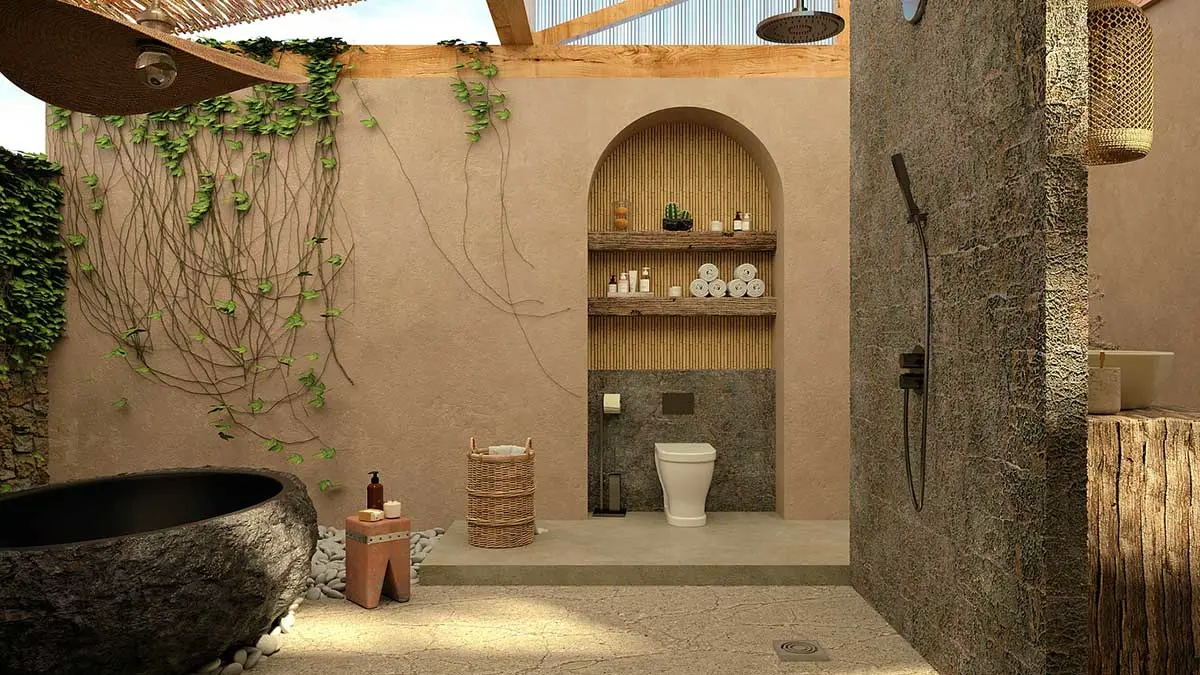
Using natural materials in Wabi Sabi home style
In some cases, gentle treatment is necessary to protect materials from environmental impact and increase their lifespan. Some common gentle treatment methods include:
- Sanding: Removing rough, uneven parts on the material’s surface to create smoothness, ease of cleaning, and safety during use.
- Matte varnish: Applying a thin layer of transparent varnish to protect the material from scratches, water absorption, and preserve its natural color.
- Natural protective coating: Using natural oils or waxes to protect the material from insects, mold, and increase durability.
Avoid using artificial materials such as plastic, shiny metals. The use of artificial materials like plastic, shiny metals is considered contrary to the core spirit of this style. Plastic and shiny metals often evoke a modern, luxurious, extravagant feeling, contrasting completely with the simplicity and rustic elegance of Wabi Sabi. Using these materials can make the space rigid, lacking in warmth and closeness to nature
2.2 Embracing Imperfection in Wabi Sabi Interior Design Style:
The most unique and distinctive feature of Wabi Sabi design style lies in honoring the beauty of imperfection. In contrast to interior styles that prioritize perfection and gloss, Wabi Sabi values rough lines, cracks, and scars on material surfaces. These details are seen as marks of time, reflecting natural aging and creating a unique, individual beauty for each piece of furniture.
Therefore, intricate material treatments such as polishing, vibrant painting, or intricate carving are considered contrary to the core philosophy of this style. Elaborate processing techniques can mask the natural beauty of materials, creating a sense of luxury, ostentation, and incongruence with the spirit of Wabi Sabi.
Wabi Sabi interior design style esteems simplicity and refinement, thus limiting the use of ornate decorations. Instead, this style leans towards using simple, rustic decorative objects with practical value. A few simple vases, dried branches, or rudimentary paintings can create focal points for the space without overwhelming the eye.
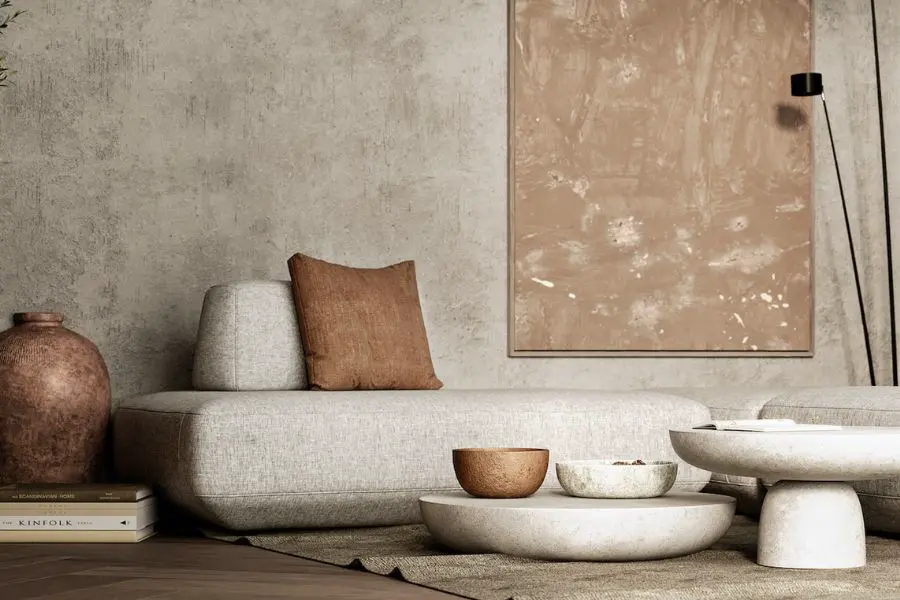
Imperfection in Wabi Sabi Interior Design Style
2.3 Colors and Lighting in Wabi Sabi Interior Design Style:
Wabi Sabi interior design utilizes neutral color palettes such as white, beige, brown, and gray as the dominant hues. These colors evoke a sense of lightness, tranquility, and harmony with the natural beauty of materials. The use of neutral colors also helps to minimize distraction, focusing on the simple details and rustic beauty of the space.
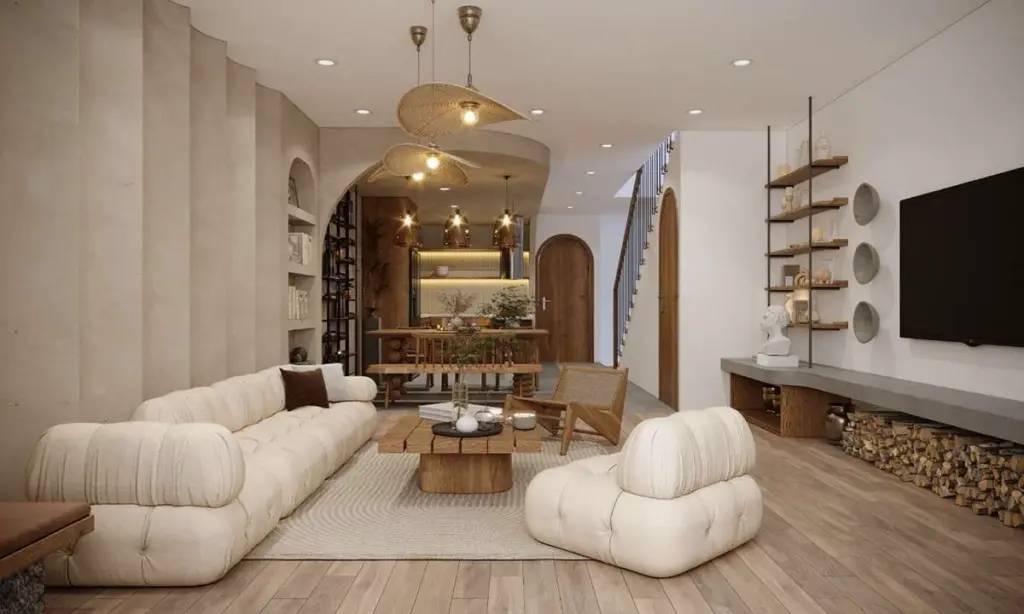
Colors often used in Wabi Sabi Interior Design
Wabi Sabi homes prioritize harmony with nature, thus often maximizing natural light in architectural design. However, this can also lead to a drawback where the space may become “stale” and flat, lacking depth due to limitations in light and color contrast. However, this is not a weakness but a unique highlight of Wabi Sabi, providing a sense of peace and lightness for individuals.

Lighting often used in Wabi Sabi Interior Design
2.4 Bringing Nature into Space:
Wabi Sabi interior design style emphasizes the connection between humans and nature. Therefore, using green plants and foliage to decorate homes is an essential element. The refreshing greenery brings vitality to the space, while also purifying the air, creating a sense of relaxation, and fostering closeness to nature.
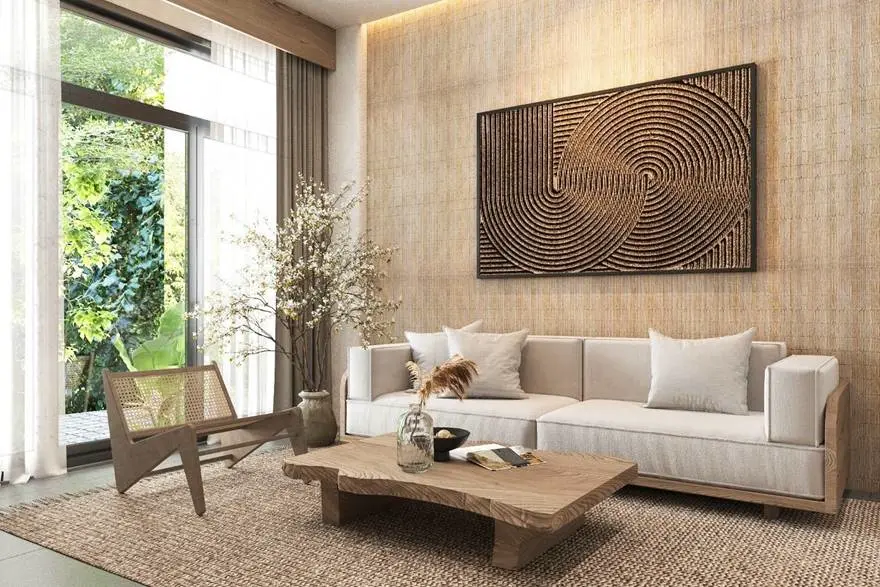
Using green plants, foliage in Wabi Sabi Design Interior Design
Instead of rough concrete walls, Wabi Sabi style encourages creating small corners to nature such as small gardens, skylights, etc. These spaces not only bring aesthetic beauty but also serve as places for people to relax, immerse themselves in nature, and seek peace in their souls.
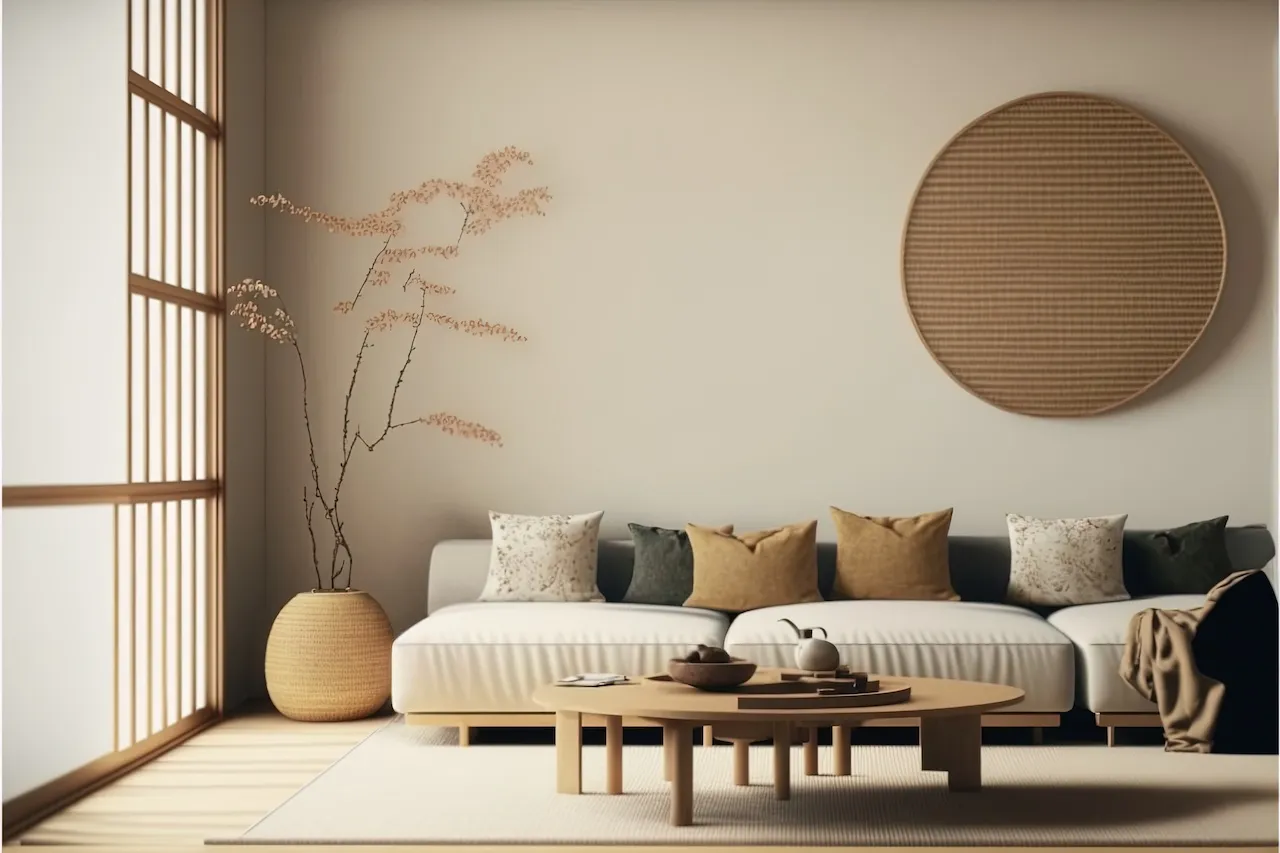
Cozy corners close to nature in Wabi Sabi Interior Design
Through this article, AIC JSC has shared with you the Wabi Sabi Interior Design Style From this, readers have recognized the importance of choosing a design and construction contractor. AIC JSC is a professional interior design and construction company. With rich experience and diverse projects, we are committed to delivering the highest quality and value to our customers. We guarantee project completion on time and provide warranty services. If you have any needs or require consultation, please do not hesitate to contact us. AIC JSC brings differentiation to customers, offering renowned interior design products known for their reliability, quality, and aesthetic appeal.
CONTACT: AIC – ARCHITECTURE & INTERIOR – CONSTRUCTION
𝐇𝐨𝐭𝐥𝐢𝐧𝐞: 090 633 02 88
𝐖𝐞𝐛𝐬𝐢𝐭𝐞: aicjsc.vn
Headquarters: No. 5 Hong Ha Street, Ward 2, Tan Binh District, Ho Chi Minh City.
𝐁𝐫𝐚𝐧𝐜𝐡 𝐨𝐟𝐟𝐢𝐜𝐞: 151/12 Thanh Xuan 21, Ward 6, Thanh Xuan District, Ward 12, Ho Chi Minh City.
Hanoi Branch: No. 20A, Hang Manh Street, Hang Gai Ward, Hoan Kiem District, Hanoi.
Danang Branch: Intersection of Nguyen Sinh Sac and Phu Thanh 7, Hoa Minh Ward, Lien Chieu District, Danang.
mục lục
In the busy whirlwind of modern life, people are increasingly seeking peace and simple values. Wabi Sabi Interior Design Style, with its philosophy of embracing the beauty of imperfection and simplicity, has become an ideal choice for those longing for tranquility in their souls. So what is Wabi Sabi? Let’s explore the prominent features of Wabi Sabi interior style with AIC JSC.
1. What is Wabi Sabi Interior Design Style:
Wabi Sabi Interior Design Style has evolved into a lifestyle applied widely across various art forms such as tea ceremonies, Ikebana flower arranging, Raku ceramics, Karesansui Zen gardens, and especially in architecture and interior design.
Wabi Sabi Design Style is a design philosophy originating from Japan, celebrating simplicity, imperfection, and naturalness. Wabi Sabi not only creates exquisite living spaces but also brings a sense of tranquility by combining elements like natural materials, using neutral colors, and honoring imperfections.
Wabi Sabi Interior Design is suitable for those who appreciate simplicity, rusticity, and cherish natural beauty. This style helps create cozy, peaceful living spaces, providing a sense of relaxation and serenity for the soul.

Wabi Sabi Interior Design Style
2. Prominent features of Wabi Sabi Interior Design Style
2.1 Embracing natural materials:
Wabi Sabi interior style emphasizes the connection between humans and nature. It often utilizes natural materials, maximizes natural light, and brings nature into the home to create living spaces close to the environment. Wabi Sabi helps people recognize the importance of environmental protection and living in harmony with nature.
Some common natural materials used in Wabi Sabi design style include wood, stone, bamboo, rattan, and straw. These materials bring a rustic, warm, and inherently simple and refined beauty, while also possessing unique grain patterns akin to artistic paintings crafted by nature itself.

Using natural materials in Wabi Sabi home style
In some cases, gentle treatment is necessary to protect materials from environmental impact and increase their lifespan. Some common gentle treatment methods include:
- Sanding: Removing rough, uneven parts on the material’s surface to create smoothness, ease of cleaning, and safety during use.
- Matte varnish: Applying a thin layer of transparent varnish to protect the material from scratches, water absorption, and preserve its natural color.
- Natural protective coating: Using natural oils or waxes to protect the material from insects, mold, and increase durability.
Avoid using artificial materials such as plastic, shiny metals. The use of artificial materials like plastic, shiny metals is considered contrary to the core spirit of this style. Plastic and shiny metals often evoke a modern, luxurious, extravagant feeling, contrasting completely with the simplicity and rustic elegance of Wabi Sabi. Using these materials can make the space rigid, lacking in warmth and closeness to nature
2.2 Embracing Imperfection in Wabi Sabi Interior Design Style:
The most unique and distinctive feature of Wabi Sabi design style lies in honoring the beauty of imperfection. In contrast to interior styles that prioritize perfection and gloss, Wabi Sabi values rough lines, cracks, and scars on material surfaces. These details are seen as marks of time, reflecting natural aging and creating a unique, individual beauty for each piece of furniture.
Therefore, intricate material treatments such as polishing, vibrant painting, or intricate carving are considered contrary to the core philosophy of this style. Elaborate processing techniques can mask the natural beauty of materials, creating a sense of luxury, ostentation, and incongruence with the spirit of Wabi Sabi.
Wabi Sabi interior design style esteems simplicity and refinement, thus limiting the use of ornate decorations. Instead, this style leans towards using simple, rustic decorative objects with practical value. A few simple vases, dried branches, or rudimentary paintings can create focal points for the space without overwhelming the eye.

Imperfection in Wabi Sabi Interior Design Style
2.3 Colors and Lighting in Wabi Sabi Interior Design Style:
Wabi Sabi interior design utilizes neutral color palettes such as white, beige, brown, and gray as the dominant hues. These colors evoke a sense of lightness, tranquility, and harmony with the natural beauty of materials. The use of neutral colors also helps to minimize distraction, focusing on the simple details and rustic beauty of the space.

Colors often used in Wabi Sabi Interior Design
Wabi Sabi homes prioritize harmony with nature, thus often maximizing natural light in architectural design. However, this can also lead to a drawback where the space may become “stale” and flat, lacking depth due to limitations in light and color contrast. However, this is not a weakness but a unique highlight of Wabi Sabi, providing a sense of peace and lightness for individuals.

Lighting often used in Wabi Sabi Interior Design
2.4 Bringing Nature into Space:
Wabi Sabi interior design style emphasizes the connection between humans and nature. Therefore, using green plants and foliage to decorate homes is an essential element. The refreshing greenery brings vitality to the space, while also purifying the air, creating a sense of relaxation, and fostering closeness to nature.

Using green plants, foliage in Wabi Sabi Design Interior Design
Instead of rough concrete walls, Wabi Sabi style encourages creating small corners to nature such as small gardens, skylights, etc. These spaces not only bring aesthetic beauty but also serve as places for people to relax, immerse themselves in nature, and seek peace in their souls.

Cozy corners close to nature in Wabi Sabi Interior Design
Through this article, AIC JSC has shared with you the Wabi Sabi Interior Design Style From this, readers have recognized the importance of choosing a design and construction contractor. AIC JSC is a professional interior design and construction company. With rich experience and diverse projects, we are committed to delivering the highest quality and value to our customers. We guarantee project completion on time and provide warranty services. If you have any needs or require consultation, please do not hesitate to contact us. AIC JSC brings differentiation to customers, offering renowned interior design products known for their reliability, quality, and aesthetic appeal.
CONTACT: AIC – ARCHITECTURE & INTERIOR – CONSTRUCTION
𝐇𝐨𝐭𝐥𝐢𝐧𝐞: 090 633 02 88
𝐖𝐞𝐛𝐬𝐢𝐭𝐞: aicjsc.vn
Headquarters: No. 5 Hong Ha Street, Ward 2, Tan Binh District, Ho Chi Minh City.
𝐁𝐫𝐚𝐧𝐜𝐡 𝐨𝐟𝐟𝐢𝐜𝐞: 151/12 Thanh Xuan 21, Ward 6, Thanh Xuan District, Ward 12, Ho Chi Minh City.
Hanoi Branch: No. 20A, Hang Manh Street, Hang Gai Ward, Hoan Kiem District, Hanoi.
Danang Branch: Intersection of Nguyen Sinh Sac and Phu Thanh 7, Hoa Minh Ward, Lien Chieu District, Danang.
In the busy whirlwind of modern life, people are increasingly seeking peace and simple values. Wabi Sabi Interior Design Style, with its philosophy of embracing the beauty of imperfection and simplicity, has become an ideal choice for those longing for tranquility in their souls. So what is Wabi Sabi? Let’s explore the prominent features of Wabi Sabi interior style with AIC JSC.
1. What is Wabi Sabi Interior Design Style:
Wabi Sabi Interior Design Style has evolved into a lifestyle applied widely across various art forms such as tea ceremonies, Ikebana flower arranging, Raku ceramics, Karesansui Zen gardens, and especially in architecture and interior design.
Wabi Sabi Design Style is a design philosophy originating from Japan, celebrating simplicity, imperfection, and naturalness. Wabi Sabi not only creates exquisite living spaces but also brings a sense of tranquility by combining elements like natural materials, using neutral colors, and honoring imperfections.
Wabi Sabi Interior Design is suitable for those who appreciate simplicity, rusticity, and cherish natural beauty. This style helps create cozy, peaceful living spaces, providing a sense of relaxation and serenity for the soul.

Wabi Sabi Interior Design Style
2. Prominent features of Wabi Sabi Interior Design Style
2.1 Embracing natural materials:
Wabi Sabi interior style emphasizes the connection between humans and nature. It often utilizes natural materials, maximizes natural light, and brings nature into the home to create living spaces close to the environment. Wabi Sabi helps people recognize the importance of environmental protection and living in harmony with nature.
Some common natural materials used in Wabi Sabi design style include wood, stone, bamboo, rattan, and straw. These materials bring a rustic, warm, and inherently simple and refined beauty, while also possessing unique grain patterns akin to artistic paintings crafted by nature itself.

Using natural materials in Wabi Sabi home style
In some cases, gentle treatment is necessary to protect materials from environmental impact and increase their lifespan. Some common gentle treatment methods include:
- Sanding: Removing rough, uneven parts on the material’s surface to create smoothness, ease of cleaning, and safety during use.
- Matte varnish: Applying a thin layer of transparent varnish to protect the material from scratches, water absorption, and preserve its natural color.
- Natural protective coating: Using natural oils or waxes to protect the material from insects, mold, and increase durability.
Avoid using artificial materials such as plastic, shiny metals. The use of artificial materials like plastic, shiny metals is considered contrary to the core spirit of this style. Plastic and shiny metals often evoke a modern, luxurious, extravagant feeling, contrasting completely with the simplicity and rustic elegance of Wabi Sabi. Using these materials can make the space rigid, lacking in warmth and closeness to nature
2.2 Embracing Imperfection in Wabi Sabi Interior Design Style:
The most unique and distinctive feature of Wabi Sabi design style lies in honoring the beauty of imperfection. In contrast to interior styles that prioritize perfection and gloss, Wabi Sabi values rough lines, cracks, and scars on material surfaces. These details are seen as marks of time, reflecting natural aging and creating a unique, individual beauty for each piece of furniture.
Therefore, intricate material treatments such as polishing, vibrant painting, or intricate carving are considered contrary to the core philosophy of this style. Elaborate processing techniques can mask the natural beauty of materials, creating a sense of luxury, ostentation, and incongruence with the spirit of Wabi Sabi.
Wabi Sabi interior design style esteems simplicity and refinement, thus limiting the use of ornate decorations. Instead, this style leans towards using simple, rustic decorative objects with practical value. A few simple vases, dried branches, or rudimentary paintings can create focal points for the space without overwhelming the eye.

Imperfection in Wabi Sabi Interior Design Style
2.3 Colors and Lighting in Wabi Sabi Interior Design Style:
Wabi Sabi interior design utilizes neutral color palettes such as white, beige, brown, and gray as the dominant hues. These colors evoke a sense of lightness, tranquility, and harmony with the natural beauty of materials. The use of neutral colors also helps to minimize distraction, focusing on the simple details and rustic beauty of the space.

Colors often used in Wabi Sabi Interior Design
Wabi Sabi homes prioritize harmony with nature, thus often maximizing natural light in architectural design. However, this can also lead to a drawback where the space may become “stale” and flat, lacking depth due to limitations in light and color contrast. However, this is not a weakness but a unique highlight of Wabi Sabi, providing a sense of peace and lightness for individuals.

Lighting often used in Wabi Sabi Interior Design
2.4 Bringing Nature into Space:
Wabi Sabi interior design style emphasizes the connection between humans and nature. Therefore, using green plants and foliage to decorate homes is an essential element. The refreshing greenery brings vitality to the space, while also purifying the air, creating a sense of relaxation, and fostering closeness to nature.

Using green plants, foliage in Wabi Sabi Design Interior Design
Instead of rough concrete walls, Wabi Sabi style encourages creating small corners to nature such as small gardens, skylights, etc. These spaces not only bring aesthetic beauty but also serve as places for people to relax, immerse themselves in nature, and seek peace in their souls.

Cozy corners close to nature in Wabi Sabi Interior Design
Through this article, AIC JSC has shared with you the Wabi Sabi Interior Design Style From this, readers have recognized the importance of choosing a design and construction contractor. AIC JSC is a professional interior design and construction company. With rich experience and diverse projects, we are committed to delivering the highest quality and value to our customers. We guarantee project completion on time and provide warranty services. If you have any needs or require consultation, please do not hesitate to contact us. AIC JSC brings differentiation to customers, offering renowned interior design products known for their reliability, quality, and aesthetic appeal.
CONTACT: AIC – ARCHITECTURE & INTERIOR – CONSTRUCTION
𝐇𝐨𝐭𝐥𝐢𝐧𝐞: 090 633 02 88
𝐖𝐞𝐛𝐬𝐢𝐭𝐞: aicjsc.vn
Headquarters: No. 5 Hong Ha Street, Ward 2, Tan Binh District, Ho Chi Minh City.
𝐁𝐫𝐚𝐧𝐜𝐡 𝐨𝐟𝐟𝐢𝐜𝐞: 151/12 Thanh Xuan 21, Ward 6, Thanh Xuan District, Ward 12, Ho Chi Minh City.
Hanoi Branch: No. 20A, Hang Manh Street, Hang Gai Ward, Hoan Kiem District, Hanoi.
Danang Branch: Intersection of Nguyen Sinh Sac and Phu Thanh 7, Hoa Minh Ward, Lien Chieu District, Danang.



